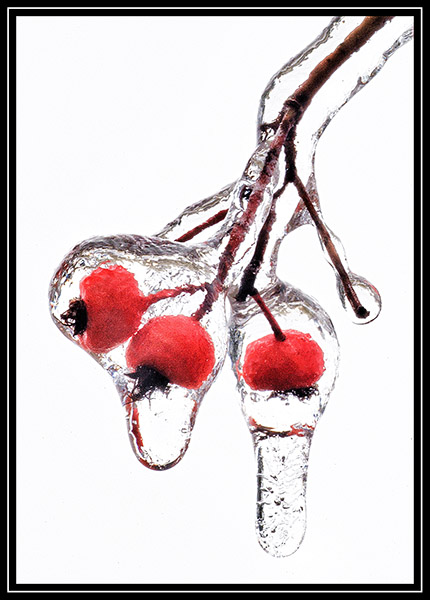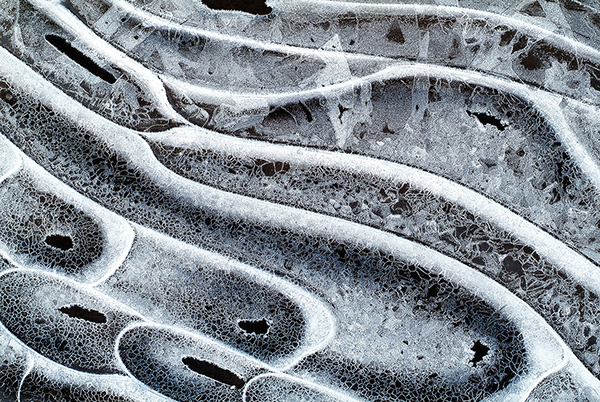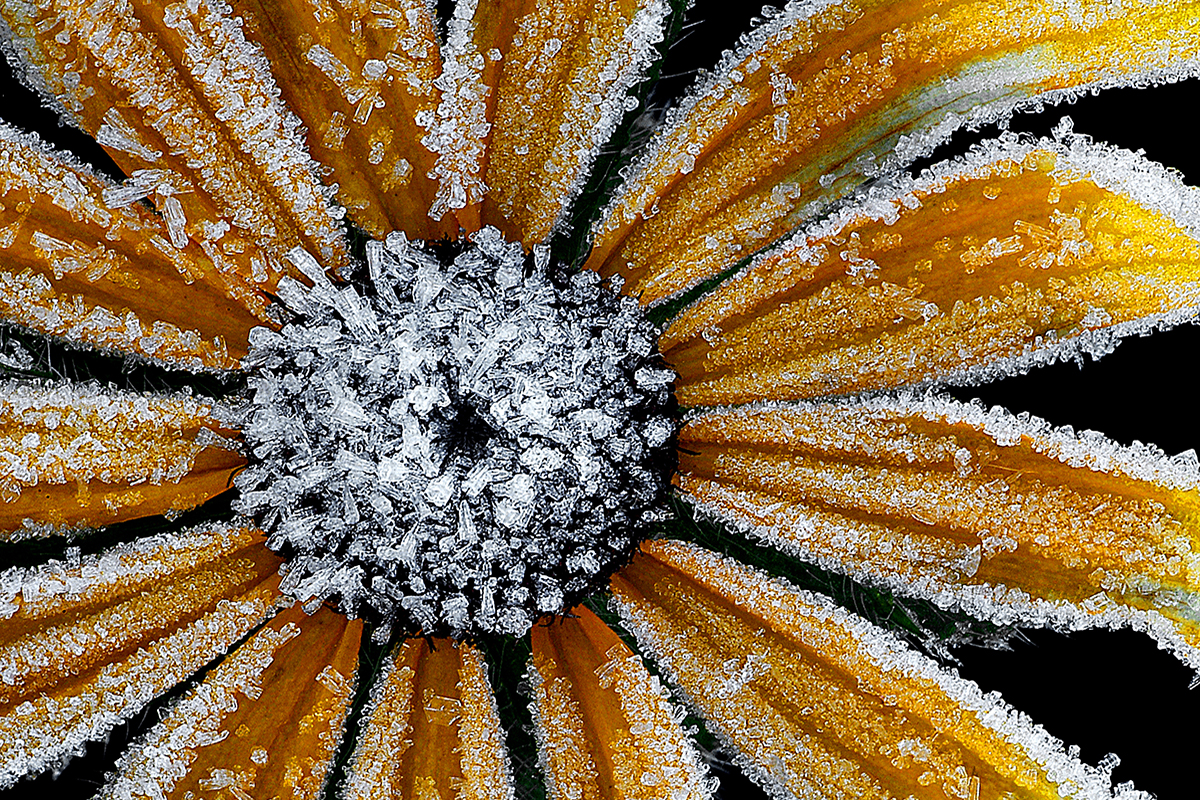Keep Your Eyes on the (Tiny) Prize
Mike Moats uses his Tamron SP 90mm VC Macro and 18-400mm VC lenses to create macro masterworks.
As seen in Tamron Magazine: Issue #1 Winter 2017
More Photo Tips | Video Gallery | Photo Gallery | Enewsletter sign-up
Images by Mike Moats
A weekender hiking through the forest may only pick up on a small percentage of what Mike Moats sees. That's because as a macro photographer, Mike's eyes have been trained to slow down and focus in on surroundings that most of us take for granted. "Macro photography forces you to see things in a different way," he says. "When you're with people who aren't accustomed to being this in tune with their environment, once you point out a potential subject, they'll say, 'Wow, I can't believe I didn't see that!' It's fascinating to open their eyes to a whole new way of taking in the world around them."
In Mike's macro meanderings—either around his hometown of Sterling Heights, Michigan, or at one of the macro-themed workshops he teaches around the country—he photographs his tiny subjects with the Tamron SP 90mm F/2.8 VC Macro lens, as well as the 18-400mm VC. "The 18-400 has a maximum magnification ratio of 1:2.9, so I can achieve some pretty amazing tele-macro photos," he says. "And the macro capabilities of the 18-400 offer an intense level of sharpness, just like the 90mm, ensuring I can show off every detail of my subjects' fur, feathers, and faces."
Here, Mike's tips for creating stunning macro photography of your own:
Head out in the morning for optimal macro shooting.
Because we use accessories like diffusers, reflectors, and LED lights, macro photographers are able to control the light at any time of day. But I prefer to go out in the early morning because the temperatures are cooler (I don't like shooting when it's hot), I can take advantage of early morning sunlight if I want to do backlighting, and there's less wind. Macro photography can be much more difficult if your tiny subjects are blowing over in the breeze.
The milkweed plant you see here is a prime example of that. In the autumn, these pods open up, and all of the seeds inside the pod are dispersed into the air. That's how it repopulates. You definitely need to shoot a plant like this when there's no wind, however, because those little hairs are so fragile, they'll move at the slightest air movement. On the morning I shot this, it was perfectly still.

90mm, F/3.2, 1/2000th sec., ISO 1000
Click image to view larger
Seek out complementary backgrounds.
I want a background that emphasizes my subject, either with a color or texture contrast or because it's so clean and simple it's not distracting from my subject. Take the photo of the berries I shot after an ice storm. It was so cold that the tree branches remained covered in thick ice for three days after the storm. It was a cloudy day, and I was shooting toward the sky. The subject itself was kind of dark, so the camera overexposed to properly expose the branch and red berries—but as it overexposed those dark areas, it also overexposed the background and whitened the sky even more, which makes the red berries and branches stand out.

180mm, F/32, 1/6th sec., ISO 400
Click image to view larger
Sometimes I'll find a really compelling subject, but it's set against a cluttered or unflattering background. I'll pick up my subject in those cases and "relocate" it to a better place so it has a more appropriate background. On the flip side, I'll sometimes carry subjects with me, like dead butterflies I buy online; that way, if I come across an appealing background, like a tree stump with an eye-catching pattern, I can simply whip a subject out of my pocket and place it against that background.
For many of my images, though, I use my subjects and backgrounds just the way they are, with no manipulation. For my photo of the oak leaves, there was a heavy frost on the morning I went out to the park. There were oak leaves lying everywhere, but these two frosted leaves were positioned just as you see them, on top of a bunch of others that hadn't retained their frost. That's why the photo works, because the contrast of the two frosted leaves pops against the darker, browner leaves surrounding them.

60mm, F/27, 0.7 sec., ISO 100
Click image to view larger
Look for easily identifiable subjects.
Over the years, I've learned certain macro subject matter‚ such as leaves and flowers, tends to attract viewers because they know exactly what they're looking at. That allows for an instant connection, which draws them even more into the picture to admire the visual elements you've worked hard to pull together.
That's not to say I won't sometimes do something a little more abstract, like the photo you see here of stream ice. Those of a more artistic bent tend to appreciate these types of shots. In December, when the temperatures start dipping below freezing, our streams and ponds start to skim over with ice. At the edge of this little stream, which was only about 4 feet wide, these odd patterns formed in the ice. Because the ice is white and the water is dark underneath, it almost looks like a black-and-white photo, except you can discern a slight bluish tint. That's from the sky reflecting in the ice.

180mm, F/16, 1.4 sec., ISO 100
Click image to view larger
Make each macro photo an original.
By this, I mean tap into the power we have as macro photographers to create truly unique art. In theory, almost every photo you take is going to eventually be erased by the environment; nearly everything we shoot is a subject with a limited lifespan. But you can even go beyond that and show subjects in a way they're not usually seen.
This photo of a black-eyed Susan covered in frost is a good example. These flowers are usually long gone by the time the frost arrives in Michigan, but this year there'd been an unusually early frost. The frost adds character to the flower and shows it in a way we're not used to seeing it. I wanted to shoot straight down into the flower, but the ground underneath it was too close. I had to crop in really tight so I didn't bring in all of the grasses lying below it. By filling the frame with the flower, I eliminated all of those distractions underneath.

180mm, F/32, 1 sec., ISO 100
Click image to view larger
About: Mike Moats
Mike, a Tamron Image Master, is an award-winning professional macro photographer based in Sterling Heights, Michigan. He teaches workshops and "Macro Boot Camps" around the country and also hosts an online Macro Photo Club to help other macro photographers achieve their goals. His work has been published in Outdoor Photographer, Nature Photographer, and Nature's Best Photography, among others. Mike's first book, Tiny Landscapes, was published in 2008.
To see more from Mike, check out his website at www.tinylandscapes.com or his Instagram.
More Photo Tips | Watch Videos | Learn More About Tamron Lenses | Photo Gallery
